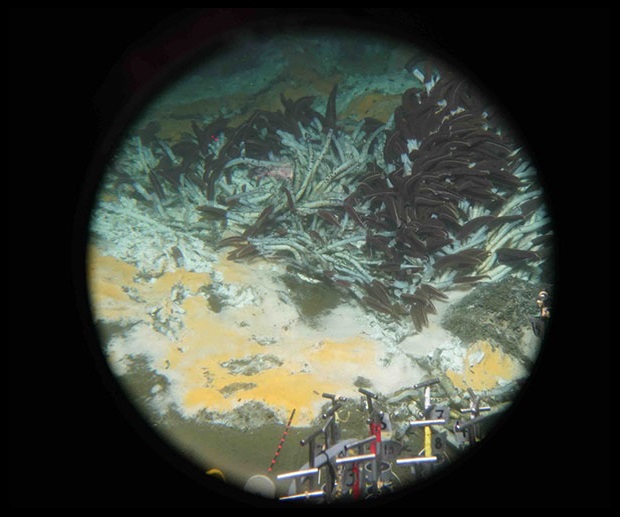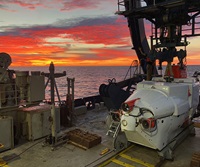Scientists have discovered dozens of new microbes that could be used to limit atmospheric concentrations of greenhouse gases, and potentially clean up oil spills.
Cassie Sims
Scientists have discovered new microbes in the deep-sea which can use greenhouse gases, such as methane and butane, as energy sources. These new microbes could help reduce the concentration of these gases in our atmosphere and have the potential to be used to clean up oil spills in the future.
The deep-sea is one of the Earth’s most unexplored areas. Researchers from the University of Texas at Austin’s Marine Science Institute have published findings from an extensive documentation of microbial communities living in the hot, deep-sea sediments of the Guaymas Basin in the Gulf of California, US. They found new microbes, vastly different genetically from any found before, that possess the same ability to ‘eat’ pollutant-chemicals as previously identified microbes.
The scientists analysed sediment from 2000m below the surface for genomic data. At this depth, volcanic activity causes high temperatures – around 200°C
–and the water contains many hydrocarbons such as methane and butane, which can be used as energy sources for bacteria.
A view of the Guaymas Basin sea floor through the window of the Alvin submersible used for data collection. Image: Brett Baker/University of Texas, Austin
They recovered 551 genomes, and 22 of these have been found to represent new entries in the tree of life. As only approximately 0.1% of the world’s microbes can be cultured, there may be many thousands more still to discover.
‘This shows the deep oceans contain expansive, unexplored biodiversity, and microscopic organisms there are capable of degrading oil and other harmful chemicals,’ said Brett Baker, Primary Investigator and Assistant Professor of Marine Science at the University of Texas. ‘Beneath the ocean floor huge reservoirs of hydrocarbon gases – including methane, propane, butane and others – exist now, and these microbes prevent greenhouse gases from being released into the atmosphere.’
The Alvin submersible used to complete the scientific mission. Image: Brett Baker/University of Texas, Austin
The Alvin submersible, the submarine that found the Titanic, was used to collect samples. Recently, Baker has been part of a team on the submarine which are sampling different areas of the Guaymas Basin that have never been previously studied.
‘We think that this is just the tip of the iceberg in terms of diversity in the Guaymas Basin,’ Baker said. ‘So, we’re doing a lot more DNA sequencing to try and get a handle on how much more there is. This paper is really just our first hint at what these things are and what they are doing.’
DOI: 10.1038/s41467-018-07418-0ID


